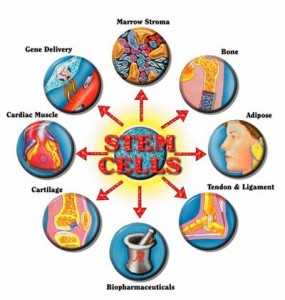Organ Transplantation
– Living donations of the kidney, part of liver, lobe of lung, part of intestine and portion of pancreas can be made
– A donor must be healthy in order to give an organ
– The demand for living organs is increasing
– For cultural and personal reasons, some are resistant to transplants from cadavers
– In some countries organs are obtained through coercion or force and sold (organ trafficking)
– Another strategy to obtain more organs for transplant is using animal-to-human transplants (xenotransplantation)
Gene Therapy
– Involves replacing a faulty gene with a normal one
– The HGP (Human Genome Project) identified up to 25000 genes in human DNA making this possible
– Currently still experimental
– In the future may be used to treat cancer, genetic disease and viral infection
Reproductive Technologies (AI and IVF)
– AI (Artificial insemination) – collecting sperm from a male and placing it in the reproductive system of a female. Used in humans from “sperm banks.” Used in cattle.
– IVF (In vitro fertilization) – sperm and eggs are collected and placed in a test tube or petri dish for fertilization to take place in a controlled environment. The developing embryo is implanted in the female’s uterus. Many are implanted since the chance of survival is less than 50%
Sex Selection Technologies
– Choosing the sex of a baby through methods such as sperm separation and staining, and PGD (Pre-implantation genetic diagnosis)
– PGD is completed by choosing male or female embryos after the IVF process.
– PGD’s original use was to detect genetic mutations linked to genetic diseases
Stem Cell research
– Stem cells (refer to previous note) – group of unspecialized cells present in animals
– All cells come from stem cells (specialize later)
Embryonic stem cells – from an embryo, can still differentiate
Adult stem cells – from an adults brain, bone marrow, limited ability to become
any type of cell
Cord blood – small amounts can be harvested
– Scientists believe they can treat injury and disease using stem cells
Cloning
– Creation of a genetically identical organism that is an exact copy of a gene, cell, tissue, organism
Cloning in Plants
– Vegetative propaganda – cutting a piece from a plant and allowing it to root to produce another plant
– Grafting – roots of one plant are attached to shoots of another to produce a more desirable type of plant (eg, a more desirable quality of fruit)
Cloning in Animals
– Reproductive cloning – transferring a nucleus from a donor body into an egg that has no nucleus. The egg is then transferred into the uterus of the mother
– Gene cloning – transferring an egg into bacteria so that it reproduces multiple times. Useful in scientific research
– Therapeutic cloning – same as reproductive cloning, but purpose is to harvest embryonic stem cells from a developing embryo
Transgenic Techniques
– Transgenic organisms contain genes from other species
– Used to study the effects of disease and for xenotransplantation
– Transgenic plants have been developed to have increased resistance to disease or environmental conditions

